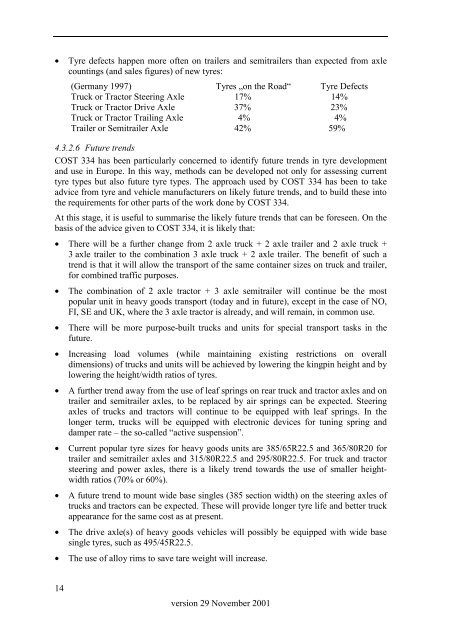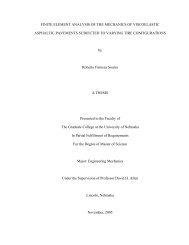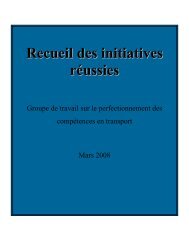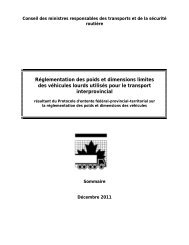You also want an ePaper? Increase the reach of your titles
YUMPU automatically turns print PDFs into web optimized ePapers that Google loves.
• Tyre defects happen more often on trailers and semitrailers than expected from axlecountings (and sales figures) of new tyres:(Germany 1997) Tyres „on the Road“ Tyre DefectsTruck or Tractor Steering Axle 17% 14%Truck or Tractor Drive Axle 37% 23%Truck or Tractor Trailing Axle 4% 4%Trailer or Semitrailer Axle 42% 59%4.3.2.6 Future trends<strong>COST</strong> <strong>334</strong> has been particularly concerned to identify future trends in tyre developmentand use in Europe. In this way, methods can be developed not only for assessing currenttyre types but also future tyre types. The approach used by <strong>COST</strong> <strong>334</strong> has been to takeadvice from tyre and vehicle manufacturers on likely future trends, and to build these intothe requirements for other parts of the work done by <strong>COST</strong> <strong>334</strong>.At this stage, it is useful to summarise the likely future trends that can be foreseen. On thebasis of the advice given to <strong>COST</strong> <strong>334</strong>, it is likely that:• There will be a further change from 2 axle truck + 2 axle trailer and 2 axle truck +3 axle trailer to the combination 3 axle truck + 2 axle trailer. The benefit of such atrend is that it will allow the transport of the same container sizes on truck and trailer,for combined traffic purposes.• The combination of 2 axle tractor + 3 axle semitrailer will continue be the mostpopular unit in heavy goods transport (today and in future), except in the case of NO,FI, SE and UK, where the 3 axle tractor is already, and will remain, in common use.• There will be more purpose-built trucks and units for special transport tasks in thefuture.• Increasing load volumes (while maintaining existing restrictions on overalldimensions) of trucks and units will be achieved by lowering the kingpin height and bylowering the height/width ratios of tyres.• A further trend away from the use of leaf springs on rear truck and tractor axles and ontrailer and semitrailer axles, to be replaced by air springs can be expected. Steeringaxles of trucks and tractors will continue to be equipped with leaf springs. In thelonger term, trucks will be equipped with electronic devices for tuning spring anddamper rate – the so-called “active suspension”.• Current popular tyre sizes for heavy goods units are 385/65R22.5 and 365/80R20 fortrailer and semitrailer axles and 315/80R22.5 and 295/80R22.5. For truck and tractorsteering and power axles, there is a likely trend towards the use of smaller heightwidthratios (70% or 60%).• A future trend to mount wide base singles (385 section width) on the steering axles oftrucks and tractors can be expected. These will provide longer tyre life and better truckappearance for the same cost as at present.• The drive axle(s) of heavy goods vehicles will possibly be equipped with wide basesingle tyres, such as 495/45R22.5.• The use of alloy rims to save tare weight will increase.14version 29 November 2001






